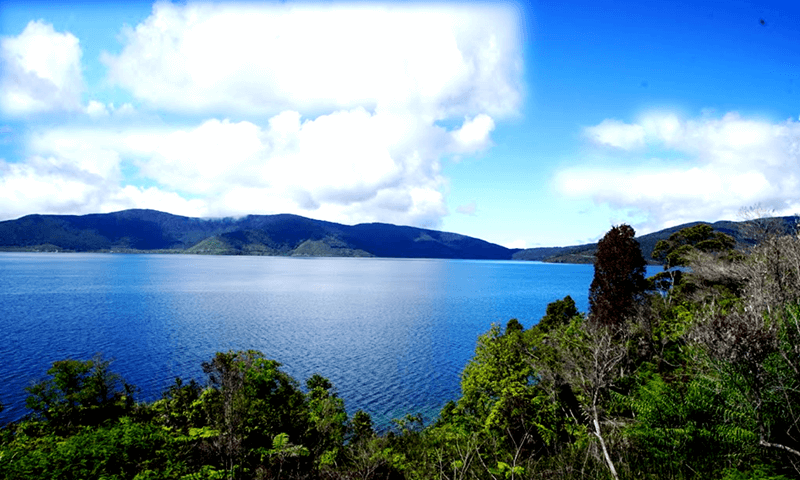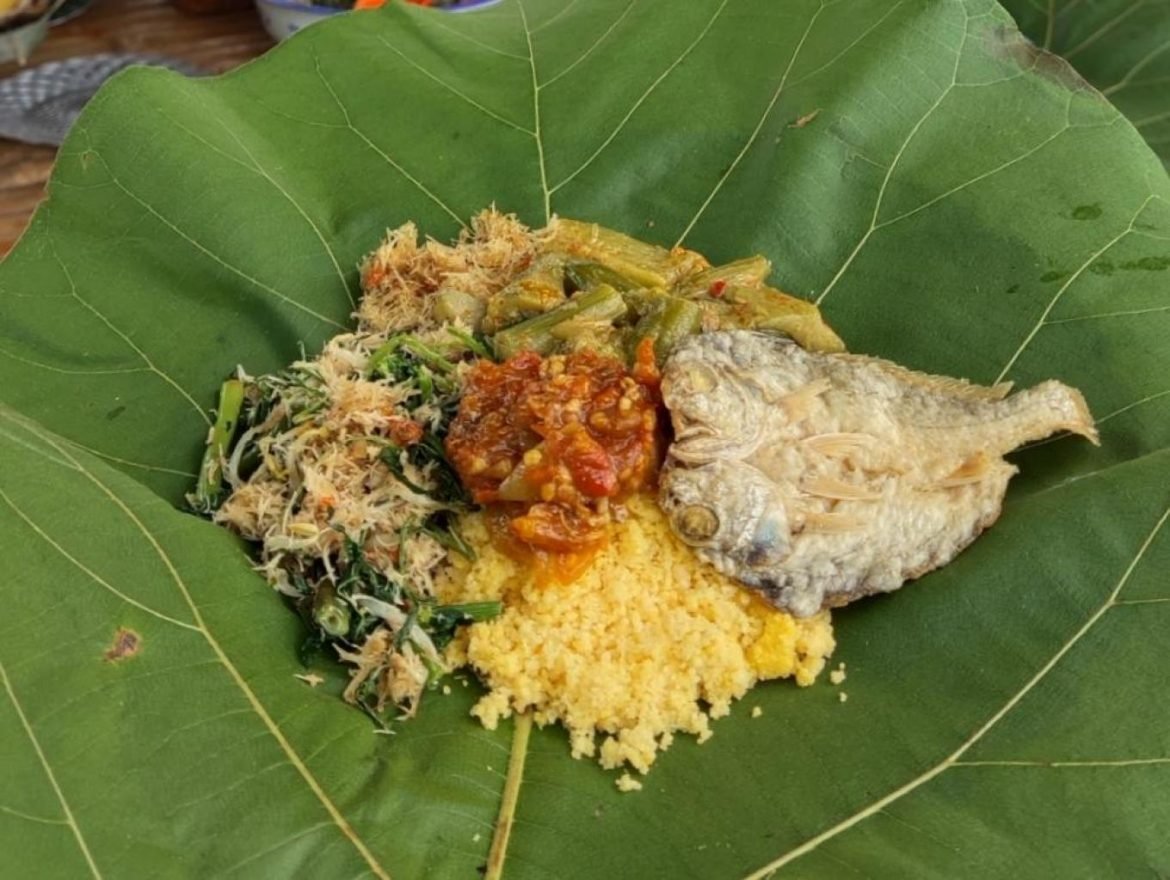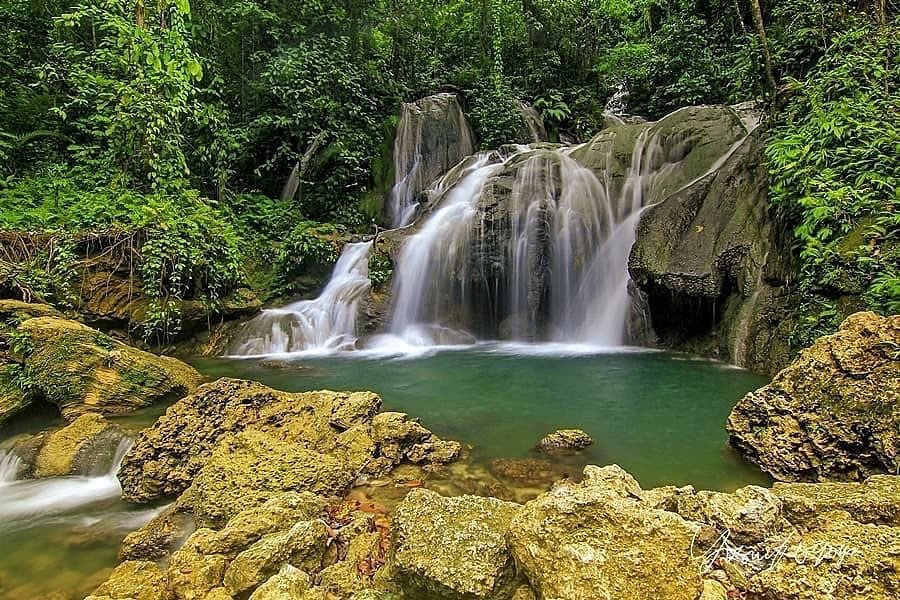All you need to know about going to the Harihar Fort Trek is

Wisatarakyat.com – Nestled amid the rugged landscapes of Maharashtra, the Harihar Fort stands tall as a testament to history, architecture, and the sheer beauty of nature. For those seeking an adrenaline rush coupled with breathtaking views, the Harihar Fort Trek is a perfect experience. In this comprehensive guide, we will delve into the details of the trek, offering insights into the history, the trail, preparation, and the unparalleled experiences that await trekkers.
The Historical Charm:
A Glimpse into the Past:
Harihar Fort, also known as Harshagad, holds a significant place in the history of Maharashtra. Built during the Yadava dynasty in the 6th century, the fort has witnessed the rise and fall of empires. From the Marathas to the Mughals, the fort has changed hands, each leaving its mark on the sturdy walls and rustic architecture.
Architectural Marvel:
The fort’s unique feature is its triangular prism-like shape, a rare sight in fort architecture. It’s a testament to the engaging marvels of its time. Trekkers can explore the remnants of the once-grand structures, including the steep steps leading to the fort’s summit and the breathtaking view from the pinnacle.
Preparing for the trip:
Essential Gear:
Before embarking on the Harihar Fort Trek, it’s crucial to pack wisely. Sturdy trekking shoes, comfortable clothing, a backpack with essentials like water, snacks, and a first aid kit are a must. Given the challenging nature of the terrain, a trekking pole can provide additional support on the rocky terrain.
Weather Conditions:
The trek’s experience is highly influenced by the weather. The ideal time for the Harihar Fort Trek is during the post-monsoon season (September to November) or the winter months (December to February). Summers can be scorching, making the climb strenuous.
Permits and Permissions:
While the trek itself doesn’t require any special permits, it’s essential to check if the fort is open for trekking on the chosen date. Some forts may be closed due to restoration work or other reasons. Ensuring you have the latest information will save you from disappointment on the day of the trial.
The Trekking Trail:
Base Village – Nirgudpada:
The trek to Harihar Fort typically begins from the base village, Nirgudpada. Trekkers can reach Nirgudpada by road from the nearest town, Trimbak. The trail is marked, and the locals are often helpful in providing directions.
Steep Ascent: The Staircase:
The most iconic part of the Harihar Fort Tower is the steep staircase leading to the fort’s entrance. Known as ‘Harishchandragad’s Third Ghat,’ this climb is not for the faint-hearted. The narrow passages carved into the rock face require careful navigation.
Needle Hole Point:
One of the highlights of the trip is ‘Needle Hole Point,’ a natural rock formation that offers panoramic views of the surrounding landscape. Trekkers often take a break here, marveling at the beauty of nature and the sense of accomplishment.
Summit: A Panoramic Reward:
Reaching the summit of Harihar Fort is the culmination of efforts and determination. The panoramic view from the top is awe-inspiring, with the Sahyadri Range unfolding in all its glory. Trekkers can relax, capture the moment, and explore the fort’s historical remnants.
Safety Tips:
Experienced Guide:
For those unfamiliar with the trekking trail, hiring an experienced guide is advised. A local guide not only ensures a safe ascent but also provides valuable insights into the fort’s history and the surrounding terrain.
Hydration and Nutrition:
Staying hydrated during the day is crucial, given the physical exertion and challenging time. Carry an ample supply of water and energy-boosting snacks to keep you fueled throughout the day.
Group Trekking:
Walking in a group enhances safety and enjoyment. The camaraderie of fellow trekkers adds to the overall experience and provides a sense of security, especially during challenging sections of the trail.
How to reach Harihar Fort:
Getting There: Navigating the Route to Harihar Fort
Reaching the Base Village:
The journey to Harihar Fort begins with reaching the base village, Nirgudpada, from where the train communicates. There are a few travel options:
1. By Road:
From Mumbai: The most common route is via NH160 and Igatpuri. After reaching Igatpuri, follow the road to Trimbak, and from there, proceed to Nirgudpada.
From Nashik, head towards Trimbak, and then continue to Nirgudpada. Local buses or private cabs are available from both Mumbai and Nashik.
2. By Train:
The nearest railway station is Igatpuri. From Igatpuri, one can hire a taxi or take a bus to Trimbak. From Trimbak, local transportation can be arranged to reach Nirgudpada.
3. By Air:
The nearest airport is Gandhinagar Airport in Nashik. From the airport, hire a taxi or use public transport to reach Trimbak and then proceed to Nirgudpada.
Local Transportation to the Trek Starting Point:
Once in Nirgudpada, the trek starting point, trekkers have a couple of options to reach the base of Harihar Fort:
1. Shared Vehicles:
Shared jeeps, or tempos, are a common mode of transportation from Nirgudpada to the base of the trek. These vehicles are usually available near the village entrance, and locals can guide you to the right spot.
2. Trekking on Foot:
For those seeking a more immediate experience, it’s possible to travel from Nirgudpada to the base of the fort. This journey allows travelers to soak up the natural beauty of their surroundings and build anticipation for the challenging ascent.
Navigation Tips:
1. Interacting with Locals:
Navigating the route becomes significantly easier by interacting with friendly locals. Villagers in Nirgudpada are familiar with the trekking trail and can provide valuable directions and tips.
2. Following Trail Markers:
The trekking trail is generally marked with arrows or symbols on rocks, ensuring trekkers stay on the right path. Pay attention to these markers, especially during the climb, to avoid getting off course.
3. Utilizing Navigation Apps:
In the age of technology, navigation apps can be a helpful companion. Download offline maps or use GPS tracking apps to stay on the designated trail. However, it’s essential to have a backup plan, as network coverage might be limited in remote areas.
Harihar Fort: Trekking Route and Difficulty
Understanding the Trail:
The Harihar Fort Trail is renowned for its unique trail, offering a perfect blend of historical exploration and challenging ascent. Let’s break down the trekking route and delve into the varying difficulty levels encountered along the way.
Base Village to the Staircase:
The trip begins in Nirgudpada, the base village. From here, trekkers travel through picturesque landscapes, passing through rustic hamlets and open fields. The initial phase is relatively gentle, providing an opportunity to soak in the natural beauty and warm up for the ascent.
The Iconic Staircase Harishchandragad’s Third Ghat:
The most iconic section of the trek is the ascension up the stairs, famously known as ‘Harishchandragad’s Third Ghat.’ This section is the highlight of the text and also contributes significantly to its difficulty level. The narrow streets are carved into the rock face, requiring careful navigation and a good amount of physical endurance.
Needle Hole Point and Further Climb:
After conquering the staircase, tourists were rewarded with the breathtaking ‘Needle Hole Point,’ a natural rock formation offering panoramic views. The trail continues to ascend through rocky patches and narrow passes. While the trail becomes challenging, the awe-inspiring scenery keeps trekkers motivated.
Summiting the Fort:
The final leg of the trek involves navigating through remnants of the fort’s historical structures and reaching the pinnacle. The summit provides a 360-degree view of the Sahyadri Range, a well-earned reward for the trek’s challenges.
Difficulty Levels:
Moderate to Difficult:
The Harihar Fort Trek is classified as moderate to difficult, primarily due to the challenging ascent of the stairs. Trekkers should be prepared for:
Steep Inclines: The staircase ascent is steady and requires a good level of fitness.
Rocky Trail: The trail includes rocky patches and uneven surfaces, requiring careful footing.
Narrow Passages: Some sections involve navigating through narrow passages, adding an element of adventure.
Technical Difficulty:
While the trek doesn’t involve technical climbing equipment, trekkers should be cautious and use handholds during the ascent. The narrow steps and exposed sections require a lot of comfort with heights.
Recommended for Experienced Trekkers:
Due to its challenging nature, the Harihar Fort trek is recommended for trekkers with some prior experience. Novice trekkers can undertake the expedition with a local guide or in a group for added safety and guidance.
Safety Measures:
1. Trekking Gear:
Investing in sturdy trekking shoes with good grip is essential. Additionally, a trekking pole can provide stability, especially during the steep ascent.
2. Hydration and Nutrition:
Staying well-hydrated and carrying energy-boosting snacks is crucial for sustained energy levels during the day.
3. Group Trekking:
Trekking in a group enhances safety, with fellow trekkers providing support and encouragement.
4. Weather Considerations:
Being aware of the weather conditions is crucial. Summers can be scorching, while post-monsoon and winter months offer more favorable trekking conditions.
Things to carry
Clothing:
Trekking Shoes:
Sturdy, well-fitting trekking shoes with a good grip for navigating rocky terrain.
Moisture-Wicking Clothing:
Lightweight, breathable, and moisture-wicking clothing to keep you comfortable during the day.
Layered Clothing: Depending on the season, carry layers to adjust to seasonal variations, including a lightweight jacket or fleece.
Wear a sun hat or cap to protect your face and hair from the sun.
Warm bedding for cooler temperatures at higher altitudes.
Trekking Gear:
Backpack: A comfortable and spacious backpack to carry essentials. Ensure it has padded shoulder straps for added comfort.
Trekking Pole:
A trekking pole for stability, especially during the steep ascent and descent.
Water Bottle:
Sufficient water to stay hydrated throughout the week.
Safety and Navigation:
First Aid Kit:
Basic first aid supplies include bandages, antiseptic cream, pain relievers, and any personal medications.
Navigation Tools:
Map, compass, or GPS device to navigate the trail.
Headlamp/Flashlight: A reliable headlamp or flashlight with extra batteries for any low-light conditions.
Snacks and Nutrition:
Energy Bars and Snacks: high-energy snacks to fuel you during the day.
Electrolyte Replenishment
Electrolyte tablets or a sports drink to stay hydrated and replenish electrolytes.
Weather Protection:
Rain Gear: A light, waterproof jacket or poncho in case of unexpected rain.
Sunscreen: High SPF sunscreen protects your skin from sun exposure.
Sunglasses: UV protection sunglasses to shield your eyes from the sun’s glare.
Personal Items:
ID and Efficiency Contact Information: Carry identification and a list of emergency contact numbers.
Camera/Smartphone: Capture Capture the breathtaking views, but ensure your devices are securely packed and protected from the elements.
Optional but recommended:
Gaiters: Gaiters to protect your lower legs and shoes from debris, especially in rocky terrain.
Multi-Tool or Knife: A compact multi-tool or knife can come in handy for various purposes.
Trekking Towel: A quick-drying trekking towel for personal hygiene.
F&Q:
- How long is the trek to Harihar Fort?
Start the Harihar fort trek early to avoid the heat. It takes 2.5 hours up and 1.5 hours down. Return by 3 pm
- Can kids climb Harihar Fort?
minimum age should be at least 9 years for the trek. Once you reach top you can enjoy nature.
- What should I carry for the Harihar Fort Trek?
- 2/3 liters of water.
- Trekking Shoes provide more grip and comfort on the trek.
- Good Torch must with an extra battery.
- Some Dry fruits / Dry Snacks / Energy Bars.
- Glucon D / ORS / Tang / Gatorade sachets.
- One Day Backpack 20 to 30 liters. And many things you carry with you.
- Which king lived in the Harihar fort?
Harihar Fort is historically significant as it connects to the Maratha warrior king, Chhatrapati Shivaji Maharaj














